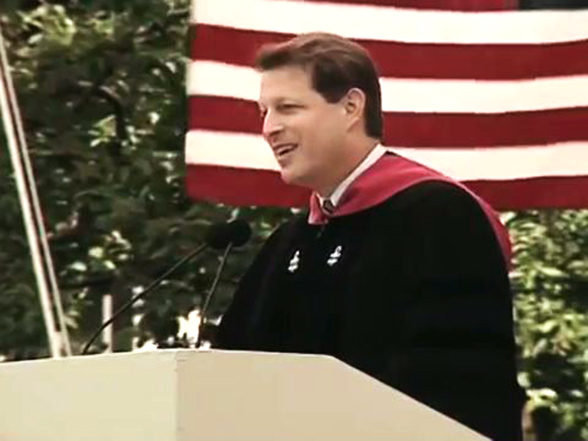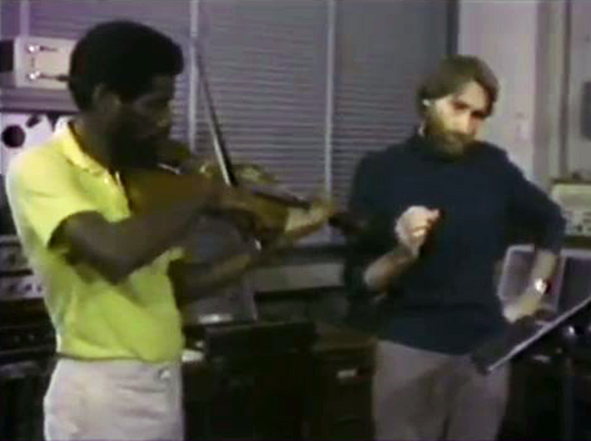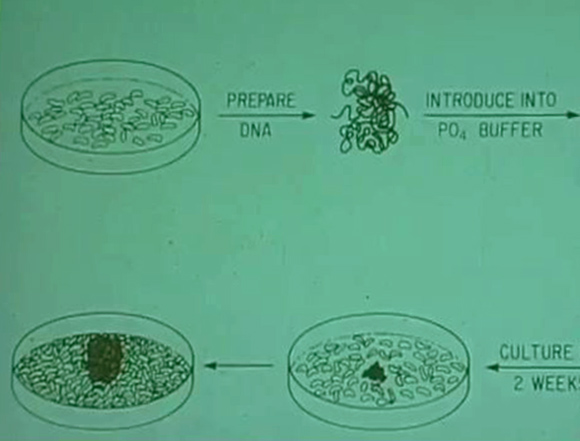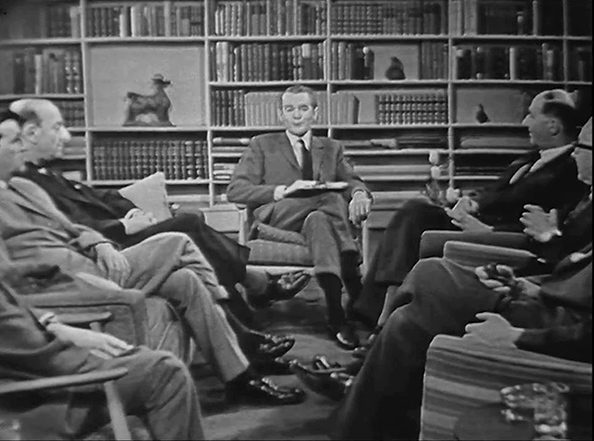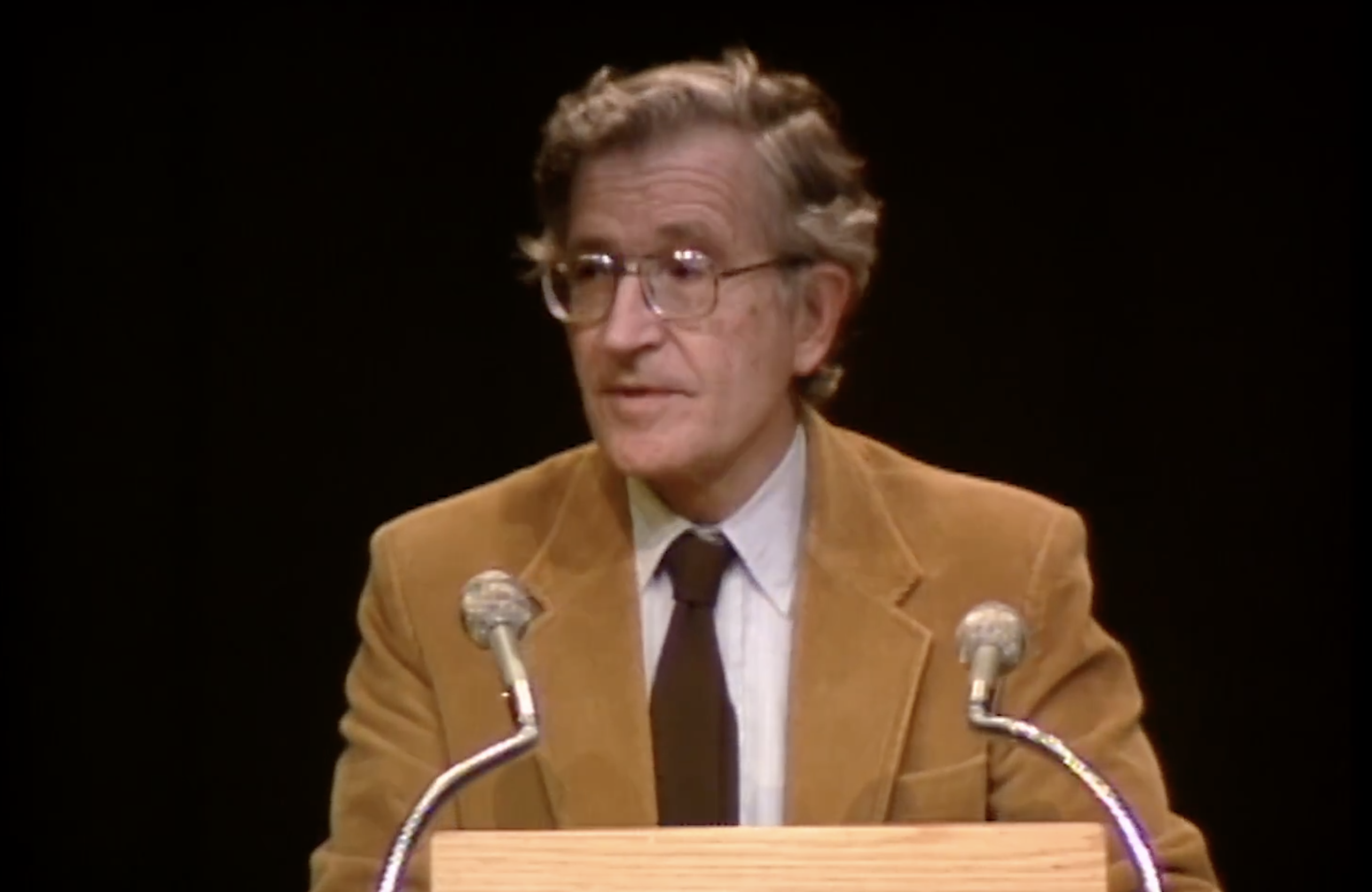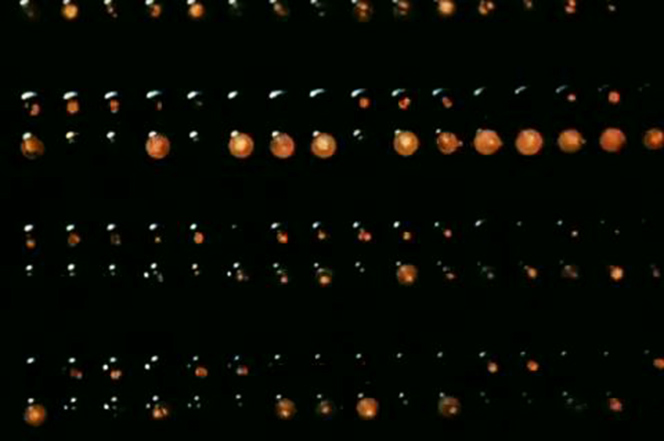MIT Science Reporter — "One Part in a Trillion" (1964)
FITCH: This man is recording traces of impurities in a metal, impurities so infinitesimal that special research techniques are needed to detect and analyze them. Scientists have found that, in order to keep pace with developments in modern technology, they must be able to fingerprint impurities as minute as one part in a trillion. This is our story today, on Science Reporter.
[MUSIC PLAYING]
Hello, I'm John Fitch, MIT Science Reporter. We're at the US Army Materials Research Agency in Watertown, Massachusetts. Behind me is a large nuclear reactor, the first of its kind to be built by the US Army. Since it was completed in 1960, it's been used by scientists not to produce power, but for research of a very special kind.
Heading the materials research laboratory is Dr. Homer Priest. We met with Dr. Priest and asked him to tell us what this research is and how the reactor is being used.
PRIEST: You are at the United States Army Materials Research Agency, an agency responsible for basic scientific research and materials. The particular organization here is the materials research laboratory where we are carrying out fundamental research on the structure of materials.
FITCH: Now what kind of materials do you mean?
PRIEST: We are primarily concerned with solid materials and mostly metals. The materials we work on are those materials used to construct the various items needed by the army in carrying out their mission. It may consist of metals, plastics, [INAUDIBLE], wood, or anything that can be used in providing the soldier with those things he needs to fight.
FITCH: But don't we already know a great deal about the structure of materials or the properties?
PRIEST: At the present time, there is an increasing requirement for lighter, stronger materials, and we have exploited those materials which come to us naturally about as far as we can go. We are making minor improvements, but there's-- we need to go much farther. We can only do this by finding out something about what gives these materials their properties based on their atomic structures.
Thus, we have a piece of copper and a piece of steel. One is red. One is gray. One is soft. One is hard. These properties arise from the atomic configurations of these particular samples, and we, therefore, must learn more about this in order to learn how to make materials having improved properties.
FITCH: I see. Well, how does an atomic reactor, a nuclear reactor, fit into this?
PRIEST: When men were first concerned with the properties of materials, they used light to look at things. They looked at them-- like this piece of steel. And they could see that it was gray and smooth. And they could tell that it was hard. Some materials, they could even look into, like this piece of glass. They could see inside if there were bubbles or defects in the piece of glass.
At the turn of the century, x-rays were discovered. And with x-rays, we then were able to look into more materials. To an x-ray, a material looks like this. Here, we have an array of atoms with the little black dots representing a nuclei. And these are the electron clouds. X-rays interact with those electron clouds. And as the material goes to higher and more complicated structures, the electron clouds get heavier, and it stops more x-rays. They interact more strongly.
Thus, the heavier materials react strongly with x-rays. Light material, such as this beryllium almost are unreactive because the x-rays go right through them. And it's heavy material, like uranium-- this very heavy material is virtually opaque to--
FITCH: It's heavy.
PRIEST: --to the x-rays. Neutrons, which we get from a nuclear reactor, on the other hand, see an array like this. They don't know the electrons are there. All they see are the nuclei. And they interact with the nuclei. And, specifically, they don't just react with more nuclei or different, heavier nuclei. They have certain specific reactions with certain specific nuclei.
Thus, neutrons react strongly with beryllium so that we can study beryllium with neutrons while we couldn't study it well with x-rays. Even the very light elements, like hydrogen and such things as boron and carbon interact with neutrons. And, here, we have a photograph of a cricket laying on a block of steel taken with neutrons.
If that been taken with x-rays, with this heavy block of steel, just nothing would have come through. There would have been no interaction with the cricket. But with neutrons, with its highly specific interaction with the hydrogen and carbon in the cricket, here we see the neutrons going through the steel and finding this little, very light cricket laying on top of it.
FITCH: I see. The steel is actually transparent then to the neutrons.
PRIEST: The steel is virtually transparent, but the little, light cricket is opaque to the neutrons.
FITCH: But now what specifically can you study with the neutrons from the reactor?
PRIEST: We study two-- in general, two things. One, this is very nice to draw on a piece of paper. The materials don't look like this. These atoms aren't all in exactly the right position. They are distorted. There's one missing here and one missing there or a wrong one in here.
Neutrons allow us to study these defects in structure, which are very important in determining the actual properties of a material. The other use of neutrons is in determining purity. We can label, by neutrons, the very minute traces of impurity in materials.
FITCH: How minute?
PRIEST: Traces as small as one part per trillion, we can determine in this fashion. 10 years ago, we were able to get materials pure to say 99.9% purity. Now, we talk in terms of four 9's, five 9's, seven 9's being-- this being the number of 9s in the percent of period. Thus, five 9's is 99.999% pure.
FITCH: Well, what is the other thousandth of a percent? How could it possibly affect the property of a material?
PRIEST: It does affect it. And we have two reasons why we have to determine the purity. The first reason is because the pure material may have greatly improved properties. Thus, in the case of tungsten, which we, for years, thought was a very brittle hard material, when made in a very high state of purity, proved to be ductile and formable as many of our other materials are.
The other reason to work with this level of purity is to give us a baseline. We want to find out what one specific impurity will do to the properties. So we must first make it pure so that we can add that one specific and not have the interaction influenced by many other things just accidentally left there.
FITCH: You mean these adding little, tiny bits of other materials will affect its properties?
PRIEST: They affect its property in very marked ways in many materials. Here, we have a material called germanium, which is an element. And this base is extremely pure. Now, we can add to this very pure material as small as one part in a millionth of an impurity and change its properties drastically. It's from this controlled addition of traces of impurity to very pure materials that the whole realm of solid-state electronics has arisen.
It has made it possible to have such things as transistors-- transistor and diodes, which have led to the whole area of improved small size circuitry and led to many improvements in military, civilian, and it has certainly been very important in the whole space age effort.
FITCH: Ever since nuclear reactors began to produce power for peaceful purposes over 20 years ago, scientists have had an abundant supply of neutrons inside the reactor itself. Now, these neutrons are being tapped for research into the fundamental properties and structure of metals. Here at Watertown, this nuclear reactor is supervised by Mr. Jack O'Connor, chief of the nuclear reactor division. We asked him to show us around the reactor and explain to us how it works.
O'CONNOR: Now, John, we are going through the double set of doors forming an air lock going into the containment shell, which houses the nuclear reactor. The containment shell, the large steel tank you saw from the outside, purpose of which is that, in the event of any unforeseen incident that the building could be completely sealed up and everything contained right within this shell.
The shell surrounds the biological shield of the reactor. This is the biological shield right here, this large, octagonal concrete tank. It's about 20 feet in diameter, and the walls are about 5 foot thick.
FITCH: So the reactor itself is on the inside of that shield?
O'CONNOR: It's in that tank inside of that 5 foot concrete. And this is the main experimental floor we're on now. We have essentially-- where the different beam tubes come out from the-- through the concrete, out here where the experiments are set up.
FITCH: You can get neutrons just by drilling a hole in the side of the pile.
O'CONNOR: Right. We essentially drill holes through the reactor shield, and we bring the-- beam of neutrons out here, set experiment up. And then, in addition, we have to replace the 5 feet of concrete with other concrete out here to keep the neutrons from going any further.
FITCH: I noticed on the signs that the reactor is on.
O'CONNOR: The reactor is operating at full power, which is about 1 megawatt. We go upstairs now, John, and we can see some of the other experimental facilities that we have used in the reactor. These are the so-called slant tubes going in at-- from this first [INAUDIBLE].
These slant tubes penetrate that same 5 foot thick concrete. These are filled with water. These are water-filled tubes so that, with the reactor operating at a megawatt, it's possible to put experiments right into the reactor right down where the radiation is the highest.
FITCH: Oh, I see. Downstairs, you bring the neutrons out to the experiment. Here, you put the experiment on the inside.
O'CONNOR: Right. We bring the neutrons out down. This one we can irradiate samples in there. We can actually make measurements on samples while they're in there being irradiated.
FITCH: I see.
O'CONNOR: If we go upstairs now, John, I think we can take a look right into the reactor and get a little better idea of how it works.
The next level, John, is primarily concerned with operation of the reactor and not much with the experimental facilities. But we can get a good look at the reactor, the real heart of the reactor.
FITCH: You mean it's possible actually to look down inside of it while it's on?
O'CONNOR: Right. With the reactor operating, you can look right down into our reactor. You can actually see the fuel elements at the very bottom there.
FITCH: Why isn't it dangerous?
O'CONNOR: Well, in this direction-- in the vertical direction, we use water as a shield. We have almost 22 feet of water between us and the reactor--
FITCH: I see, instead of concrete.
O'CONNOR: --through there. Instead of the concrete down below-- in the field.
FITCH: And the neutrons cannot get through all that water?
O'CONNOR: No, they're all stopped before they get up here. So the radiation levels up here is not of any hazard.
FITCH: It seems to me that the reactor is actually glowing.
O'CONNOR: Right. This is a Cherenkov radiation, which is visible with the reactor in water. And it's caused by charged particles passing through the water and giving up a little there energy as visible light.
FITCH: But would you tell us just how the reactor itself actually works?
O'CONNOR: I think if we take a look at our little scale model of the reactor, it'll be a little easier, John. On the model, John, we're standing at this level here. And we are just looking down into the pool, right down at the fuel elements located on this pedestal at the very bottom of the tank.
FITCH: That's the reactor itself?
O'CONNOR: This is the reactor here.
FITCH: It doesn't look very big.
O'CONNOR: No. It's only about maybe 4 cubic feet, made up of fuel elements containing our uranium. We use uranium highly enriched in uranium-235. And this is located in the thin plates running the length of these elements. 235 is a fissionable isotope of uranium, and when it is hit by one neutron, it will split up by giving off energy and also other neutrons.
FITCH: I see.
O'CONNOR: If you use the-- you can arrange it so that these neutrons will hit more uranium atoms. Then, you could get a chain reaction going, and you can start producing them. Now, what you will want to do is produce the same number that you're losing in all different ways, by absorption and by using the experiments and things, so you want to make this balance.
So you want to do is make-- you have to arrange this uranium, and you have to also put in some moderating material because the uranium, when it does break apart and gives off these neutrons, they're very high energy. And you want to slow them down so they have a better probability of hitting another uranium atom.
FITCH: How do you do that?
O'CONNOR: We use regular water in our reactor. It's been purified and all the impurities removed. But this water is between these plates. In addition, we also use this water for cooling purpose to remove the heat. We operate about one million watts--
FITCH: I see. This is really--
O'CONNOR: --of heat.
FITCH: --the opposite of a commercial power plant then that would use atomic reactor.
O'CONNOR: Yes. We don't want the heat. They want it. We don't-- We want the neutrons, and they are a nuisance to them. So we remove the heat by pulling the water down at almost 1,100 gallons a minute through the fuel elements into another cooling system in the basement, removing the heat, and then bringing the water right back into the reactor and using it all over again. This is a recycled system.
FITCH: What are these pipes that go in here?
O'CONNOR: These are the experimental facilities, which we saw on the first floor. This is one of the horizontal tubes going out to one of the experiments that we saw set up on the main floor. These are one of the ones that isn't actually in use, so the extension going over to the core isn't in use. We also have the slant tubes, which we saw on the way up, which allow you to bring samples right down to the core while the reactor's operating.
In the basement area, we have what they call a pneumatic tube system, which can-- which you can shoot a sample right up into the reactor while it's operating and then bring it back to that basement area.
FITCH: Mhm. What about all of these rods and things from the reactor?
O'CONNOR: Well, some of these fuel elements that we've mentioned have some of the inner plates are missing so that there's an actual space there in which we can insert a control rod. And this control rod moves in and out and helps balance this where its equation of production is equal to the absorption. These are held by electromagnets, and part of the safety system is controlling the current to these electromagnets.
If we cut this current off, these rods will drop right back into the core and shut down the reactor.
FITCH: I see.
O'CONNOR: Also, we have the various neutron detectors, which feed signals up to a controls point. And these control rods are also moved up and down by motors located at the [? very pool ?] top.
FITCH: Well, where are all these control rods and detectors controlled from?
O'CONNOR: Well, all this information is brought back to this control room where the licensed operators interpret the different recorders and manipulate these control rods up and down and maintain the power level of the reactor.
FITCH: The reactor here at Watertown has one aim and one aim only, to provide a constant supply of neutrons to bombard metals. In order to learn more about the specific experiments in which these neutrons are used, we talked, once again, with Dr. Priest.
PRIEST: Earlier, when we were talking about uses of the reactor, I told you that we used the reactor to determine very small traces of impurities in our materials. This is the area where we carry out that type of work. It's known as the pneumatic tube area. We take a sample, which this is a typical sample of aluminum in which we're looking for a trace of cobalt.
This is actually a large sample. We frequently use much smaller samples. Place it in a plastic container. Cap it. Place it in a plastic bag because we don't wish to contaminate the carrier, or the rabbit, as we call it, which will be shot into the reactor.
FITCH: Why do you call that a rabbit?
PRIEST: I don't know. It's a generic term that's passed down for these. I guess because they hop into the reactor and hop out again.
FITCH: I see.
PRIEST: We screw the cover on the reactor. Then, I pass this to Mr. Bailey, our reactor operator, who will insert it in the pneumatic tube. We'll first check it for radioactivity to show you that there is no radioactivity in the sample as you can see by the fact that there's no reading on the meter.
FITCH: Now, he's going to put that inside the reactor?
PRIEST: He is going to shoot that up beside the core. It doesn't go into the core, but it goes parallel to it and right beside it in a region of maximum neutron flux. And there, the neutrons will convert the material to a radioactive material.
FITCH: Well, now the nuclear reactor is a rather sensitive device, isn't it? Doesn't putting a foreign element in there tend to upset it?
PRIEST: Yes, it does. And, for that reason, we keep very careful control on this particular operation. Nobody can insert material through the pneumatic tube into the reactor except by expressed written approval of either Mr. O'Connor or myself. Is the sample ready to come out?
BAILEY: [INAUDIBLE].
PRIEST: The sample is now sitting up beside the core of the reactor, and the various elements in it are becoming radioactive because the neutrons are bombarding them and reacting with the elements.
FITCH: Mhm. This is very much like a coin changer in a department store.
PRIEST: It's exactly like a coin changer. The sample has now shot back out, and Mr. O'Connor, our house physicist, is checking to make sure that it is not dangerously radioactive. Since, here, we work with the unknown materials, it is possible to have a sample become dangerously radioactive. You will note that we no longer handle the rabbit in our hands, only by tongs.
FITCH: And behind that lead wall--
PRIEST: Paneled behind a lead wall, it's being placed in a pneumatic clamp, which will hold it while we remove the cover by a long handle.
FITCH: I see. That's a very nice bottle opener.
PRIEST: It works very well. Sometimes, it isn't long enough. Now, Mr. Bailey will bring the sample over and hold it up to the counter.
FITCH: So we do everything by remote control.
PRIEST: Everything has to be handled remotely. Notice we place it in another plastic bag, so there's no danger of contamination. Now, if we hold it with the meter, you will see-- watch the needle on the meter. You will see that now we have made a radioactive sample of that, quite strongly radioactive.
FITCH: Not dangerous to us, I guess.
PRIEST: Not dangerous to us here, although we wouldn't want to carry it around in our pocket.
FITCH: I see.
PRIEST: This radioactivity will decay quite rapidly. And in a couple of hours, it will be perfectly safe again.
FITCH: All right. Now, what will be done with that in order for you to make these measurements of the impurity?
PRIEST: We have-- in another part of the building, we have a very elaborate device known as a multichannel analyzer. This measures the energy of the radiations and the type of radiation the amount of radiation of each energy which is produced. Each element which may be in there has a particular series of radiations, of specific energy, and specific amount which are as unique to that element as your fingerprint is to you.
For example, for the element gallium, here, we have a typical curve, which we would get from the multichannel analyzer. And you see we have peaks of radiation. For example, a 6/10 of an electronvolt and so forth at the various points. Now, if we were lucky, we would just have a single impurity in the material. But we are never that lucky. We always have many.
And so a whole lot occurs [? where ?] other peaks located in different places are superimposed. But this very elegant device is able to sort these out. We tell it that such and such an element has such and such a pattern. Please subtract that from the total pattern and see what's left. And we keep subtracting the things we think are in there until we find a single pattern and do that until we finally can determine exactly what is in the sample.
FITCH: And then the height of these peaks would tell you how much gallium was in that sample?
PRIEST: The height of the peak tells us how much. The position tells us the kind of material it is.
FITCH: And you're able to detect even one part in a million with something like this?
PRIEST: We go much less than one part in a million. It depends some on the element. But, in many elements, we can go to one part in a trillion and practically all elements one part in a billion by this technique. This is our most sensitive technique we have for determining impurities in pure materials.
FITCH: Earlier, you also said that another thing that you're interested in is the actual structure of these various elements. Now, how do you make these studies?
PRIEST: We do make studies on structure. And for that, I think you should talk to Dr. John Antal, one of our research physicists who is intimately engaged in that type of research.
FITCH: This is Dr. John Antal, a research physicist of the Army Materials Research Agency. One of the most interesting experiments going on right now is actually attached like a giant barnacle to the side of the reactor itself. Using a beam of neutrons from the reactor, Dr. Antal is probing into the atomic structure of metals, something he would be unable to see by any other means.
FITCH: Dr. Antal, just what is it you'd like to find out about the structure of these metals?
ANTAL: Well, we really would like to find out how defects in metals affect the various properties in metals. We know that all metals, as they occur in nature and as we process them, are full of defects. And we would like to know just what the role is of these defects in changing how a metal acts as you make things out of it.
FITCH: I see. Well, how do you actually conduct your experiment?
ANTAL: We do scattering experiments, that is we scatter neutrons from samples of metal. We have here this barnacle, as you have termed it, which contains an apparatus for selecting a single energy of neutron of about 200th of an electronvolt. Those neutrons come out of a hole such as this, pass across through the air into a sample of metal, such as this iron sample here.
A very small number of these neutrons are scattered out in various directions, and the experiment consists in simply trying to find where these neutrons are scattered from the original direction of the neutron beam. And that is accomplished by moving this neutron detector to various angles and measuring the number of neutrons which arrive at those angles.
The result is a plot may be made of the number of neutrons versus the angle. This is angle 0, for example. And as the angle increases, we find that there are positions where rather large numbers of neutrons occur. These are being scattered from the sample.
FITCH: You mean they aren't just scattered in random directions? They go off in particular directions?
ANTAL: That's correct.
FITCH: Why is that?
ANTAL: Well, this is a result of the sub-microscopic structure of the iron metal. It's perhaps better explained by looking at this model, which attempts to show you what iron looks like down on this scale of a neutron. The atoms here are the balls, which are separated by about 200 millions of an inch actually. And as you see, they're in very orderly fashion-- arranged in a very orderly fashion from here to here to here and on and on through the structure.
If we put this sample down here rather than our iron, we see that we can arrange, at certain positions, for the neutrons to run into these orderly arrangements of atoms. And you actually get reflections something like a mirror.
FITCH: I see.
ANTAL: And since this is a rather perfect example, we would get rather perfect, sharp reflections.
FITCH: And what happens if there's a defect or an impurity or something?
ANTAL: If there is a defect of some sort, it occurs something like this. An atom is stuck inside this lattice in a position where atoms aren't normally found. Actually, the picture is better represented by a model something like this where all of that space is really full of electrons.
FITCH: Oh, I see. Those others were just really the nuclei, which the neutrons see, whereas the actual atoms have these clouds of electrons around them.
ANTAL: That's correct. So that when an atom, which is better represented here, is placed inside here, something has to give. And what gives is the atoms which surround this defect atom. The plains of atoms, although they are rather perfect as seen here, will now have a bump in them above and below and to the side. This is one type of defect. There are other types of defects. But they all cause the same sort of problem, a waviness in the planes.
The result of this will then be to take, for this perfect metal, which one of those peaks-- wherein one of those peaks might look like this. And this has been expanded out in scale-- and make that look more like this, which is a rather broad peak. Again, we have taken our mirrors that we had down here, and we have made them imperfect so that the pattern which is obtained is imperfect and broad.
FITCH: I see. And these foreign atoms would tend to affect the properties of that metal. Yes,
ANTAL: They-- affect the properties very importantly. In fact, this is the difference between pure iron, which is a rather soft and useless metal, and steel, which has many impurities and is a very good strong metal.
FITCH: Thank you very much Dr. Antal. Today, we've been visiting the United States Army Materials Research Agency in Watertown, Massachusetts. Our guests have been Dr. Homer Priest, Mr. Jack O'Connor, and Dr. John Antal. I'm John Fitch, MIT science reporter.
This is NET, National Educational Television.




